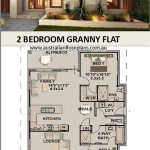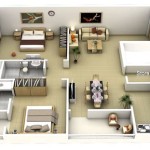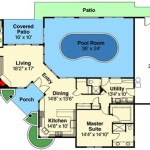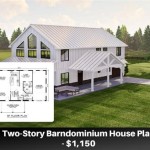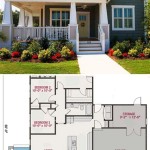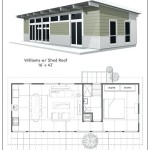3 Bedroom Modern Cabin Plans: Designing Your Dream Retreat
The allure of a cabin, particularly one designed with modern sensibilities, stems from its ability to blend rustic charm with contemporary comfort. Modern cabin plans offer a compelling alternative to traditional cabin designs, emphasizing clean lines, efficient use of space, and a connection to the surrounding environment. For many, the ideal cabin includes three bedrooms, providing ample space for families, guests, or even a home office. This article explores the key considerations, design elements, and planning aspects of 3-bedroom modern cabin plans.
When considering a 3-bedroom modern cabin, the initial step involves defining your specific needs and preferences. Factors such as the intended use of the cabin (vacation home, permanent residence, rental property), the number of occupants, and lifestyle all play a crucial role in determining the optimal design. Understanding these needs will guide the selection of a suitable floor plan, the incorporation of necessary amenities, and the overall aesthetic of the cabin.
Key Considerations Before Selecting a 3-Bedroom Modern Cabin Plan
Before diving into specific plans, several fundamental aspects need to be carefully evaluated. These considerations will impact the suitability of a particular design for your desired location and lifestyle.
Location and Site Analysis: The location of the cabin is paramount. A thorough site analysis should be conducted to assess factors such as topography, soil conditions, climate, solar orientation, and existing vegetation. Steep slopes may necessitate specialized foundation design, while soil composition can influence the type of foundation required. Climate considerations include temperature ranges, precipitation levels, and potential for extreme weather events. Solar orientation affects the amount of natural light and heat gain, impacting energy efficiency. Finally, existing vegetation can provide privacy and contribute to the cabin's aesthetic appeal.
Local Building Codes and Regulations: Compliance with local building codes and regulations is non-negotiable. These regulations dictate minimum setbacks, height restrictions, permitted materials, and energy efficiency standards. It is essential to consult with local authorities or a qualified building inspector to ensure that the chosen plan adheres to all applicable regulations. Failure to comply with these regulations can result in costly delays and modifications.
Budget and Cost Estimation: Establishing a realistic budget is critical for a successful cabin construction project. The cost of building a cabin can vary widely depending on factors such as the size of the cabin, the quality of materials used, the complexity of the design, and the location. Obtaining detailed cost estimates from reputable contractors is advisable. These estimates should include the cost of materials, labor, permits, and any necessary site preparation work. It's prudent to factor in a contingency fund to account for unforeseen expenses.
Design Elements in Modern Cabin Plans
Modern cabin design distinguishes itself through its emphasis on simplicity, functionality, and connection with nature. Several key design elements contribute to this aesthetic and enhance the overall living experience.
Open Floor Plans: Open floor plans are a hallmark of modern cabin design. They create a sense of spaciousness and facilitate social interaction. Typically, the living room, dining area, and kitchen are seamlessly integrated into a single, large space. This arrangement allows for natural light to penetrate deep into the cabin, further enhancing the feeling of openness. Open floor plans also lend themselves well to flexible furniture arrangements, allowing the space to be adapted to different needs.
Large Windows and Natural Light: Maximizing natural light is a central theme in modern cabin design. Large windows, strategically placed, not only illuminate the interior spaces but also offer breathtaking views of the surrounding landscape. Floor-to-ceiling windows, particularly in the living areas, can create a dramatic connection between the interior and exterior. Skylights can also be incorporated to bring light into areas that may not receive direct sunlight. The use of energy-efficient windows is crucial to minimize heat loss or gain, ensuring comfortable indoor temperatures year-round.
Sustainable Materials and Energy Efficiency: Modern cabin design often incorporates sustainable materials and energy-efficient features to minimize environmental impact and reduce operating costs. Reclaimed wood, bamboo flooring, and recycled metal are examples of sustainable materials that can add character and eco-friendliness to the cabin. Energy-efficient appliances, high-performance insulation, and solar panels can significantly reduce energy consumption. Passive solar design principles, such as orienting the cabin to maximize solar gain in the winter and minimize it in the summer, can further enhance energy efficiency.
Clean Lines and Minimalist Aesthetics: Modern cabin design embraces clean lines and minimalist aesthetics. Ornamentation is minimized, and the focus is on functionality and simplicity. Straightforward design choices are favored and complex flourishes are typically avoided. This approach creates a sense of calm and order, allowing the occupants to focus on the surrounding natural beauty. Simple color palettes, often featuring neutral tones with pops of color, further contribute to the minimalist aesthetic.
Planning and Customization of Your 3-Bedroom Modern Cabin
Once a suitable 3-bedroom modern cabin plan has been selected, the next step involves planning the construction process and customizing the plan to meet specific needs and preferences. This phase requires careful attention to detail and collaboration with architects, contractors, and interior designers.
Adapting the Plan to Your Lifestyle: While pre-designed plans offer a solid foundation, they often require customization to perfectly suit your lifestyle. Consider how you intend to use the cabin and make adjustments accordingly. For example, if you plan to work remotely from the cabin, a dedicated home office space may be necessary. If you frequently entertain guests, consider expanding the dining area or adding an outdoor deck. The master bedroom and bathroom arrangement can also be adapted. A walk-in closet and ensuite bathroom enhance the appeal of a modern cabin. A key advantage of the design process is that homeowners can decide which features are most important.
Interior Design Considerations: The interior design of a modern cabin should complement the overall architectural style and create a comfortable and inviting atmosphere. Consider the use of natural materials, such as wood, stone, and leather, to enhance the connection with the surrounding environment. Choose furniture that is both functional and aesthetically pleasing. Incorporate ample storage space to keep the cabin clutter-free. Layered lighting, including ambient, task, and accent lighting, can create a warm and inviting ambiance.
Working with Architects and Contractors: Collaborating with experienced architects and contractors is crucial for a successful cabin construction project. Architects can help refine the plan, ensuring that it meets your specific needs and complies with local building codes. Contractors can provide accurate cost estimates and manage the construction process efficiently. It is essential to choose professionals who have experience building modern cabins and who are committed to quality craftsmanship. Regular communication and collaboration with the design and construction team are essential to ensure that the project stays on track and within budget. Regular site visits are also advantageous.
Landscaping and Outdoor Spaces: The landscaping and outdoor spaces surrounding the cabin are an integral part of the overall design. Consider creating outdoor living areas, such as decks, patios, or screened porches, to extend the living space and provide opportunities for relaxation and enjoyment of the natural surroundings. Native plants and trees can be incorporated into the landscaping to create a sustainable and low-maintenance environment. A fire pit or outdoor fireplace can create a cozy gathering spot for entertaining. Thoughtful landscaping can dramatically improve the curb appeal of the modern cabin.
Designing a 3-bedroom modern cabin involves a thoughtful and iterative process. By carefully considering the location, budget, and design preferences, and by collaborating with experienced professionals, homeowners can create a unique and comfortable retreat that reflects their personal style and seamlessly integrates with the surrounding environment. Modern cabin design requires a detail-oriented approach to provide the best possible result.

3 Bedroom Cabin Floor Plans Home Design Ideas 2a

Modern Country Cottage Plans Your Perfect 3 Bedroom Cabin With Loft

Cabin Style House Plan 3 Beds 2 Baths 1230 Sq Ft 47 315 Dreamhomesource Com

Moving To The Farm

Best Cottage House Plans Vacation Cabin With 3 Bedrooms

Plan 420047wnt 3 Bed Modern Mountain Home With Stacked Stone Fireplace

Stylish Low Budget Modern 3 Bedroom House Design Plans Blog Floorplans Com

26x36 Ft 3 Bedroom Single Story Small House Plan Modern Architectural Design Tiny Cabin Floor Plans Printable Blueprint For

Stylish Low Budget Modern 3 Bedroom House Design Plans Blog Floorplans Com

Contemporary Cabin House Plan Ank Studio Plans

